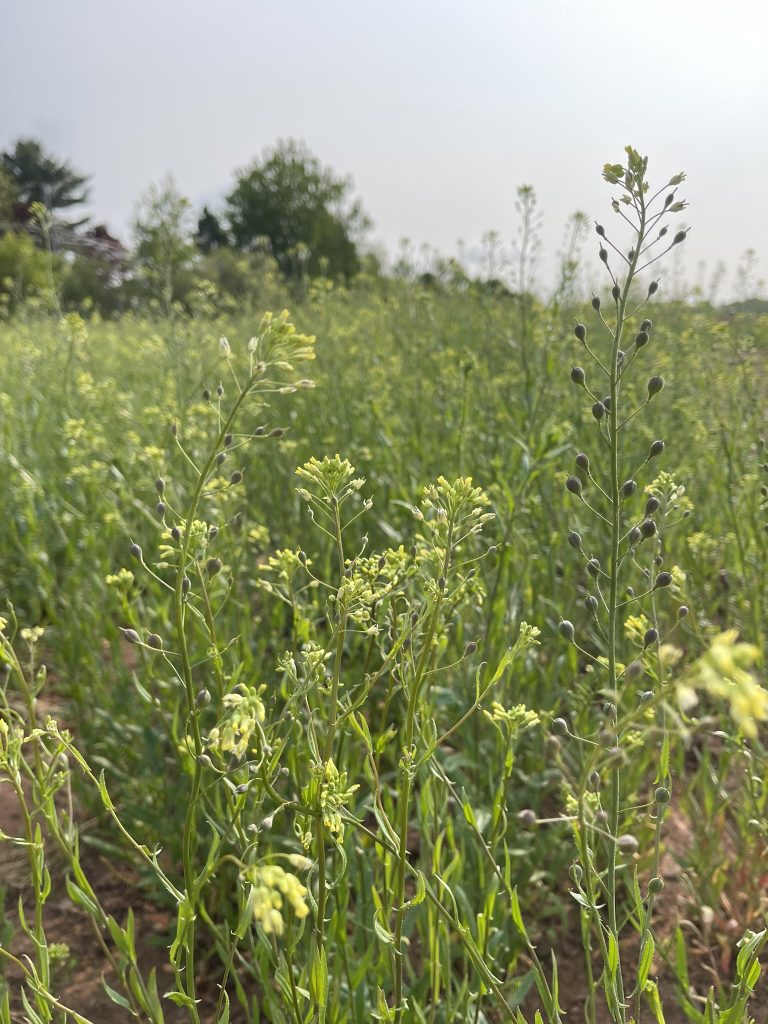ECODA is seeing positive results with winter camelina this spring. The plants are at the flowering and seed-setting stage in Truro, Nova Scotia. This is the first time this variety has been grown in the province. Dr. Yunfei Jiang, ECODA research partner and assistant professor in Agronomy at the Department of Plant, Food, and Environmental Sciences, Faculty of Agriculture, Dalhousie University, says winter camelina has good winter survival ability based on her team’s observations.
“The objective was to evaluate the effects of seeding dates (300, 600, and 900 seeds/m2) and seeding rates (Early, Middle and Late) on winter camelina. Based on our observations, mid-late September (Middle) appears to be the best seeding date for winter camelina.”
Dr. Jiang says in early September (Early), shepherd’s purse and other weeds were growing in the winter camelina plots. That means the seeded plants competed with weeds. There’s no, or minimum, weed competition for mid-late September seeding or early October (Late); with fewer plants but more branches for early October seeding plants.
Camelina is used for biofuels, fish food and healthy dietary oils. The image below shows winter camelina flowering and seed-set from the first week in June 2025.

